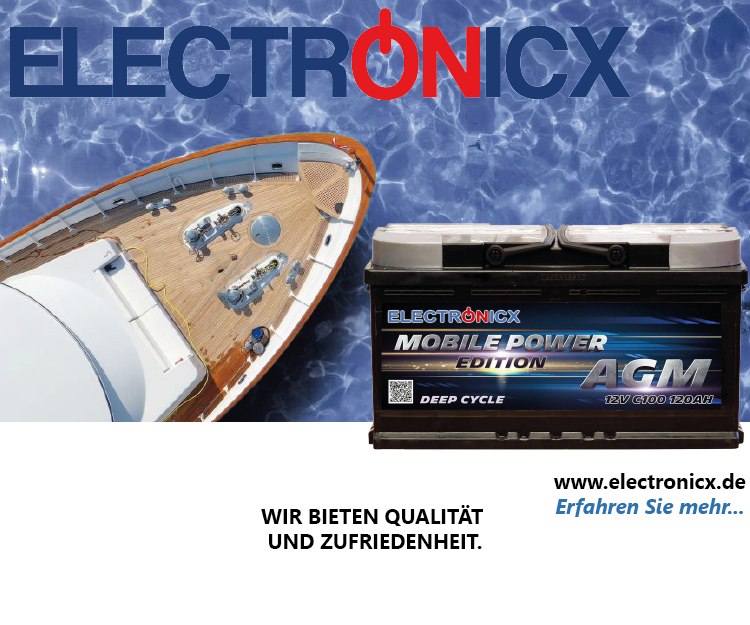The Best Electronics Brands of 2025: Reviews
Introduction to Electronics Brands
Table of Contents

The electronics industry has undergone significant evolution over the past few decades, becoming an integral part of our daily lives. It encompasses a vast array of products, including smartphones, laptops, and home appliances, each designed to enhance convenience, communication, and entertainment. As technology advances at an unprecedented pace, the choice of electronics brand plays a crucial role in ensuring a satisfactory user experience. Selecting a reputable brand not only guarantees a high-quality product but also provides access to reliable customer service and ongoing innovation.
<a rel="sponsored"
href="https://electronicx.pxf.io/c/6077345/1166330/14483" target="_top" id="1166330">When evaluating various electronics brands, it is important to understand the distinct categories they represent. For instance, in the realm of smartphones, consumers often seek brands that prioritize cutting-edge technology, user-friendly interfaces, and exceptional camera quality. Similarly, in the laptop segment, performance, battery life, and ergonomic design are essential factors influenced by brand reputation. Home appliances, such as refrigerators and washing machines, also exhibit varying levels of reliability and energy efficiency, making brand recognition a vital consideration for consumers.

The significance of brand reputation extends beyond mere product features. A trusted electronics brand is more likely to invest in research and development, leading to innovative solutions that enhance users’ lives. Additionally, established brands tend to offer better post-sale services, including warranties and customer support, ensuring that consumers are cared for even after their purchase. This aspect is particularly important in the electronics market, where technological advancements can quickly render products obsolete or require technical support. Consequently, understanding the reputation of electronics brands is key for consumers who wish to make informed decisions regarding their investments in technology.
<a rel="sponsored"
href="https://electronicx.pxf.io/c/6077345/1167013/14483" target="_top" id="1167013">Criteria for Evaluating Electronics Brands
When assessing electronics brands, it is crucial to utilize a set of criteria that reflects both the performance and reputation of the products offered. The evaluation process begins with product quality, which encompasses durability, functionality, and overall design. High-quality electronics are expected to last for several years, offering reliability and efficiency. Brands that consistently produce high-quality products tend to earn consumer trust, resulting in repeat purchases and positive word-of-mouth publicity.
related articles:https://asadmarket.com/wp-admin/post.php?post=961&action=edit#/
Another pivotal criterion is customer service. A brand that provides exceptional customer service can greatly enhance the consumer experience. This includes responsiveness to inquiries, the ability to resolve issues effectively, and the willingness to assist customers through various channels, such as phone, chat, or email. Efficient customer service not only assists consumers when problems arise but also strengthens the brand’s reputation and fosters customer loyalty.

Warranty offerings also play a significant role in evaluating electronics brands. A comprehensive warranty reflects a brand’s confidence in its products and provides consumers a sense of security. Extended or flexible warranty options can enhance consumer satisfaction by protecting against potential defects or issues post-purchase. Thus, brands that offer better warranty services often stand out in the competitive electronics market. related articles:https://asadmarket.com/wp-admin/post.php?post=961&action=edit#/
Innovation in technology is yet another essential criterion. Brands should be committed to staying ahead of technological trends and continually enhancing their product offerings. This may include incorporating advanced features, improved connectivity options, or eco-friendly practices. A brand’s ability to innovate impacts its market position and helps maintain consumer interest.
Lastly, consumer reviews are invaluable for gauging brand performance. Honest feedback from real users provides insights into product performance, usability, and overall satisfaction. Brands that receive consistently positive reviews demonstrate their capability to meet or exceed customer expectations, which significantly affects their credibility and trustworthiness.
<a rel="sponsored"
href="https://electronicx.pxf.io/c/6077345/1167084/14483" target="_top" id="1167084">Top Electronics Brands of 2025
As we progress into 2025, the landscape of electronics brands brings together both established giants and innovative newcomers. Leading the charge are well-known names such as Apple and Samsung, which continue to influence the market through their cutting-edge technology and reliable products. Apple, renowned for its premium smartphones and laptops, consistently captivates consumers with its seamless ecosystem and focus on user experience. The iPhone, a flagship innovation, exemplifies the brand’s commitment to excellence and premium design.
Meanwhile, Samsung remains a formidable competitor, recognized for its diverse range of electronics that includes smartphones, televisions, and home appliances. The Galaxy series showcases their expertise in mobile technology, distinguished by exceptional camera quality and expansive displays. Samsung’s continuous investment in research and development allows the brand to stay ahead, incorporating new features such as foldable screens and advanced artificial intelligence.
Emerging brands such as OnePlus and Xiaomi are carving their niches in 2025, challenging traditional leaders with competitive pricing and innovative features. OnePlus, initially known for offering flagship-level specifications at mid-range prices, has expanded its portfolio to include high-quality accessories and smart home devices. Their recent models emphasize fast performance and sleek design, appealing to tech-savvy consumers.
Xiaomi, on the other hand, has made significant inroads into various markets with its extensive range of smart devices and gadgets. Their approach focuses on providing high-quality products at accessible prices, which has enabled rapid growth in brand popularity. Robust marketing strategies combined with a strong social media presence have helped position Xiaomi among top competitors.
In conclusion, as we survey the top electronics brands of 2025, it is clear that a blend of legacy brands and disruptive innovators shapes the industry. This dynamic environment fosters innovation, ensuring consumers have a wealth of options to meet their electronics needs.
<a rel="sponsored"
href="https://electronicx.pxf.io/c/6077345/1560988/14483?subId1=bluetooth%20charger" target="_top" id="1560988">In-Depth Reviews of Leading Products
The electronics market in 2025 is more competitive than ever, with several brands standing out thanks to their innovative designs and advanced features. In this section, we delve into specific products from these leading brands, including smartphones, laptops, smart TVs, and wearables, providing insights crucial for making informed purchasing decisions.
Smartphones have become a significant aspect of daily life, and brands like Apple, Samsung, and Google are at the forefront. The latest iPhone model is renowned for its powerful A15 Bionic chip, superior camera systems, and seamless integration within the Apple ecosystem. Conversely, Samsung’s flagship Galaxy series boasts vibrant displays and extensive customization options, appealing to Android users seeking a flexible experience. Google’s Pixel smartphones are recognized for their exceptional camera capabilities and pure software experience, making them highly attractive to photography enthusiasts.
Moving on to laptops, Dell, HP, and Lenovo are key players in the market. Dell’s XPS line offers stunning 4K displays and premium build quality, catering to professionals and creatives. On the other hand, HP’s Spectre series combines aesthetic appeal with performance, often featuring long battery life and fast charging. Lenovo’s ThinkPad series remains a favorite among business professionals, appreciated for its reliability and excellent keyboard design. When selecting a laptop, potential buyers should account for their specific needs, including processing power, portability, and budget.
In the realm of smart TVs, LG, Sony, and TCL are leading the charge. LG’s OLED technology delivers unparalleled picture quality, while Sony’s Bravia line offers exceptional audio and visual experiences, favoring home cinema enthusiasts. TCL, known for its affordability, provides impressive features such as robust smart capabilities and high-resolution displays at competitive price points. Finally, wearables, exemplified by products from brands like Fitbit, Apple, and Garmin, are becoming increasingly sophisticated, offering health tracking, fitness monitoring, and seamless connectivity.
Overall, understanding the strengths and weaknesses of each product empowers consumers to invest wisely in electronics that suit their lifestyle and needs.
<a rel="sponsored"
href="https://electronicx.pxf.io/c/6077345/1569102/14483" target="_top" id="1569102">Trends in Electronics for 2025
The electronics industry is experiencing rapid evolution, marked by several transformative trends that are expected to shape consumer choices in 2025. One of the most significant advancements is the integration of artificial intelligence (AI) across various devices. AI-powered technologies enhance user experiences by providing personalized functionalities, automating tasks, and empowering devices to learn from user behaviors. This trend reflects a growing consumer preference for products that seamlessly integrate with daily life, making technology more intuitive and responsive.
An equally important trend is the shift toward eco-friendly technology. As environmental awareness increases among consumers, electronics brands are responding by developing sustainable products. This includes utilizing recyclable materials, improving energy efficiency, and reducing harmful emissions during production. Many companies are adopting circular economy principles, focusing on product longevity and responsible disposal. Eco-conscious consumers are increasingly prioritizing brands that demonstrate a commitment to sustainability, thereby influencing market dynamics. <a rel=”sponsored” href=”https://electronicx.pxf.io/c/6077345/1872486/14483″ target=”_top” id=”1872486″>
The rise of smart home devices also marks a significant trend in the electronics landscape. Consumers are increasingly attracted to smart home technology that offers convenience, security, and energy management. From smart speakers to connected security systems, these devices allow users to control their environments remotely and enhance their overall lifestyle. Brands are investing in innovation to deliver products that are not only functional but also compatible with other smart devices, fostering an integrated smart ecosystem.
To remain competitive, electronics brands must adapt to these trends by aligning their strategies with consumer expectations. Embracing AI, incorporating sustainable practices, and expanding smart home offerings will be crucial for brand relevance in 2025. As consumers navigate these trends, their choices will increasingly reflect their values and lifestyle preferences, driving the electronics market’s evolution.
<a rel="sponsored"
href="https://electronicx.pxf.io/c/6077345/1863298/14483" target="_top" id="1863298">Consumer Feedback and Brand Loyalty
Consumer feedback plays an essential role in shaping the perception of electronics brands in an increasingly competitive marketplace. Reviews, surveys, and social media interactions provide valuable insights into customer preferences, expectations, and experiences. These feedback mechanisms have transformed the traditional landscape of brand loyalty, where positive customer experiences and word-of-mouth recommendations can significantly elevate a brand’s reputation. In 2025, companies are prioritizing the analysis of consumer engagement data to identify trends and preferences that drive loyalty.
Online reviews serve as a powerful weapon for consumers when assessing electronics brands. With platforms such as Amazon, Best Buy, and specialized tech review websites, potential buyers can quickly gauge user satisfaction and product performance. Positive ratings often translate to increased sales, while negative feedback can lead to a sharp decline in consumer trust. Brands that actively monitor these platforms tend to respond more effectively. They use negative feedback as an opportunity to address customer concerns, which can foster goodwill and ultimately enhance brand loyalty.
Social media has emerged as a fundamental tool in shaping brand perceptions and fostering community engagement. Electronics companies are leveraging platforms like Twitter, Facebook, and Instagram to create interactive and responsive customer service experiences. By engaging with consumers through comments, direct messages, and proactive posts, these brands create a sense of community that strengthens loyalty. Moreover, timely responses to customer inquiries can significantly impact individuals’ perceptions of a brand’s commitment to service quality.
Furthermore, research indicates that excellent customer service is closely intertwined with long-term brand loyalty. Consumers tend to remain loyal to brands that provide exceptional support, as it enhances their overall experience. Brands that integrate customer service seamlessly into their feedback channels are better equipped to cultivate and maintain customer loyalty over time. This proactive approach not only improves brand image but also solidifies a strong emotional connection with the consumer, ensuring their continued support and advocacy.
<a rel="sponsored"
href="https://electronicx.pxf.io/c/6077345/1872493/14483" target="_top" id="1872493">Comparing Price vs. Quality in Electronics
In the ever-evolving landscape of electronics, consumers often find themselves navigating the complex relationship between price and quality. As technology advances, understanding how to evaluate whether a product’s price is justified by its quality, durability, and performance becomes crucial. Various factors contribute to this assessment, and consumers must engage in diligent research to make informed purchasing decisions without compromising on quality.
When considering electronics, one must first recognize that a higher price does not always equate to better quality. Often, brands incorporate premium pricing strategies due to their prestigious reputation rather than the actual performance enhancements of their products. Therefore, it is essential to review product specifications, customer feedback, and expert reviews to form a comprehensive view of whether the price aligns with the offering’s quality. Additionally, comparing similar products from various brands can unveil disparities in quality to price ratios, guiding consumers in determining what constitutes a fair price.
Durability is another significant aspect of evaluating electronics. A lower-priced item may seem attractive initially; however, if it lacks durability and fails after a short period, the consumer may end up spending more in the long run due to replacements. Hence, assessing the materials used in manufacturing, the warranty offered by the manufacturer, and user reviews concerning longevity can provide invaluable insights. Furthermore, performance indicators such as speed, efficiency, and ease of use should not be overlooked as these can impact the overall user experience.
In conclusion, balancing price and quality in electronics requires careful consideration and research. By evaluating product specifications, reading consumer reviews, and comparing various offerings, buyers can make informed decisions that align quality with budget, ensuring that they receive good value for their investment.
<a rel="sponsored"
href="https://electronicx.pxf.io/c/6077345/1872493/14483" target="_top" id="1872493">Future Outlook for Electronics Brands
The future of electronics brands in 2025 is poised to be shaped by a variety of dynamic factors that include evolving consumer preferences, rapid technological advancements, and fluctuating economic conditions. As consumers increasingly prioritize sustainability and energy efficiency, electronics companies are likely to respond by developing eco-friendly products. Brands that incorporate recyclable materials and energy-efficient technologies will likely gain a competitive edge in the marketplace, aligning their offerings with the values of eco-conscious consumers.
Furthermore, the landscape of technological advancements will undeniably influence the future success of electronics brands. Innovations such as artificial intelligence (AI), the Internet of Things (IoT), and 5G connectivity are expected to drive significant shifts in consumer behavior and expectations. Brands that successfully integrate these technologies into their products will not only enhance user experiences but will also be positioned as leaders within the industry. For instance, smart home devices with advanced AI capabilities will redefine convenience in daily living, urging brands to pursue deeper customization and personalized user experiences.
In addition, economic factors, including inflation and supply chain disruptions, will impact the strategic planning of electronics companies. As manufacturers navigate these challenges, efficiency in production and cost management will be critical. Brands that can adapt swiftly to these economic pressures while maintaining product quality will likely emerge stronger. Moreover, the shift towards online shopping necessitates that electronics brands prioritize digital marketing strategies to effectively reach their target audience. Adapting to omni-channel retailing is becoming crucial for maintaining market relevance.
In conclusion, the outlook for electronics brands in 2025 indicates a landscape marked by innovation, adaptability, and a consumer-centric approach. By embracing sustainability, harnessing advanced technologies, and responding to economic challenges, companies can navigate the competitive market effectively. The brands that recognize and incorporate these trends are more likely to thrive in the ever-evolving electronics sector.
Conclusion: Choosing the Right Electronics Brand
<a rel="sponsored"
href="https://electronicx.pxf.io/c/6077345/1872493/14483" target="_top" id="1872493">As we navigate the landscape of electronics brands in 2025, it is essential to consider various factors that align with individual needs and preferences. The choice of an electronics brand can significantly influence the user experience, product reliability, and overall satisfaction. Throughout this discussion, we have examined several leading brands, delving into their product offerings, innovative technology, customer support, and brand reputation.https://asadmarket.com/wp-admin/post.php?post=961&action=edit#/
When selecting an electronics brand, one must first identify personal requirements. For instance, consider the primary usage of the device. Are you focused on high-quality audio for a sound system, or is cutting-edge camera technology more critical in your smartphone selection? Understanding the specific functionalities that matter most will guide your decision-making process. Additionally, evaluating reviews and customer feedback can provide insights into real-world usability and the longevity of products.
Another important aspect to contemplate is the level of customer support offered by a brand. Reliable after-sales service can often make a substantial difference, particularly when addressing issues or seeking upgrades. Investigating warranty policies and response times to customer inquiries can indicate a brand’s commitment to its users. Moreover, staying informed about new trends and innovations within the electronics field will enable you to remain updated on the most reputable brands that cater to various technological advancements. <a rel=”sponsored” href=”https://electronicx.pxf.io/c/6077345/1872493/14483″ target=”_top” id=”1872493″>
Ultimately, it is prudent to balance both qualitative and quantitative factors when making a purchase. By considering all these variables, you increase the likelihood of selecting an electronics brand that not only meets your needs but also enhances your overall experience. Informed choices lead to greater satisfaction, ensuring that the investment in your chosen electronics product provides value and enjoyment in the long term.
As of March 2025, several electronics brands have distinguished themselves through innovation, quality, and customer satisfaction. Here’s a curated overview of some of the top-performing brands:
1. Nvidia Nvidia has surged to the top of PCMag’s Best Tech Brands Index for 2025, with a score of 159.8. This leap is attributed to their high-quality graphics cards, particularly the RTX 4070 and 4080 Super Founders Editions, which received excellent reviews. citeturn0search0
2. LG Electronics LG continues to innovate, especially in the television sector. At CES 2025, they unveiled the G5 OLED TV, which impressed with its brightness and color depth. Additionally, their acquisition of the Dutch smart home platform Athom positions LG as a strong competitor in the smart home market. citeturn0search3turn0news12
3. Samsung Electronics Samsung showcased significant advancements at CES 2025, including AI-enhanced smart TVs and the AI companion Ballie. Their commitment to integrating AI and robotics into consumer electronics highlights their leadership in the industry. citeturn0news16
4. Apple Apple remains a dominant force in the electronics market. In February 2025, their products accounted for 5.9% of Amazon.com’s electronics bestsellers, with offerings ranging from $15.96 to $359.00. Their consistent innovation and quality continue to resonate with consumers. citeturn0search2
5. Nvidia Nvidia’s commitment to excellence is further evidenced by its top ranking in PCMag’s Best Tech Brands Index for 2025, propelled by high-quality products like the RTX 4070 and 4080 Super Founders Editions graphics cards. citeturn0search0
6. Roku Roku has carved a niche in the streaming device market. In February 2025, it secured a 3.9% share of Amazon.com’s electronics bestsellers, offering products that blend affordability with functionality. citeturn0search2
7. Beats Beats, known for its stylish and high-quality audio products, held a 3.9% share of Amazon.com’s electronics bestsellers in February 2025. citeturn0search2
These brands exemplify the dynamic nature of the consumer electronics industry, each contributing unique innovations and products that cater to diverse consumer needs.
Here’s a breakdown of the pros and cons of the top electronics brands of 2025:
1. Nvidia
Pros:
- Industry-Leading Graphics Cards: Nvidia’s GPUs, especially the RTX 4070 and 4080 Super Founders Editions, are top-of-the-line in terms of performance, catering to gamers, content creators, and professionals.
- AI and Deep Learning: Nvidia has become a leader in AI and machine learning, making their products future-proof and versatile for various industries.
- Superior Driver Support: Nvidia’s driver updates are frequent and typically very reliable.
Cons: <a rel=”sponsored” href=”https://electronicx.pxf.io/c/6077345/1872493/14483″ target=”_top” id=”1872493″>
- Price: Nvidia’s high-end GPUs can be prohibitively expensive, making them less accessible for budget-conscious consumers.
- High Power Consumption: Some of Nvidia’s graphics cards require a significant amount of power, potentially leading to higher electricity costs and the need for more robust PC setups.
2. LG Electronics
Pros:
- Top-Tier OLED TVs: LG’s OLED TVs are known for their incredible picture quality, with vibrant colors and deep blacks.
- Innovative Technology: Their G5 OLED TV introduced at CES 2025 is highly praised for its brightness and color depth.
- Smart Home Integration: LG’s acquisition of the Athom platform strengthens their position in the smart home market.
Cons:
- Price of High-End Models: LG’s premium OLED TVs can be expensive, limiting their appeal to consumers on a budget.
- Smart Home Ecosystem: While LG is expanding in smart home tech, it may not yet have the same level of ecosystem integration as some competitors like Google or Amazon.
3. Samsung Electronics
Pros:
- AI and Robotics Innovation: Samsung’s focus on AI in their products, like the Ballie AI companion and their AI-enhanced TVs, keeps them at the forefront of tech trends.
- Product Variety: Samsung excels in a wide array of products, from smartphones to home appliances and smart TVs.
- Quality and Durability: Samsung devices are known for their build quality and long-lasting performance.
Cons:
- Software Issues: Some users report bloatware or intrusive apps on Samsung smartphones and smart TVs, leading to a less-than-ideal user experience.
- Price Range: While Samsung offers a wide range of products, their premium devices can be quite expensive, similar to LG and Apple.
4. Apple
Pros:
- Ecosystem Integration: Apple’s ecosystem of devices (iPhone, MacBook, iPad, etc.) works seamlessly together, offering great convenience for users who own multiple Apple products.
- High-Quality Performance: Apple products are renowned for their smooth performance, top-tier processors (like the M1 and M2 chips), and premium build quality.
- Strong Brand Loyalty: Apple consistently delivers innovative features, making it one of the most trusted brands globally.
Cons:
- High Prices: Apple products are often priced at a premium, which can make them unaffordable for many.
- Limited Customization: Apple’s closed ecosystem means less room for personalization compared to Android or PC options.
- Repairability: Apple devices are known for being difficult and expensive to repair or upgrade, which can be frustrating for some users.
5. Roku
Pros:
- Affordable Streaming Devices: Roku is known for offering high-quality streaming devices at an affordable price, making it accessible to a wide audience.
- User-Friendly Interface: The Roku interface is intuitive, making it easy for anyone to navigate.
- Wide Streaming Support: Roku supports a broad range of streaming services, including Netflix, Hulu, Amazon Prime Video, and more.
Cons:
- Limited Advanced Features: While Roku is excellent for basic streaming, it doesn’t have the advanced features or smart home integration that some competitors like Amazon Fire TV or Google Chromecast offer.
- Occasional Ads: Some Roku devices feature ads in the interface, which can be annoying for users who prefer a cleaner experience.
6. Beats (By Apple)
Pros:
- Premium Audio Quality: Beats products are known for delivering strong bass and clear audio, making them ideal for music lovers.
- Stylish Design: Beats headphones are often praised for their fashionable and sleek look.
- Seamless Apple Integration: Being owned by Apple, Beats devices integrate effortlessly with other Apple products.
Cons:
- Price: Beats headphones are generally more expensive compared to other audio brands offering similar or better sound quality at a lower price.
- Sound Signature: Some audiophiles believe Beats headphones are too bass-heavy and lack balanced sound, which might not appeal to all users.
7. Nvidia (Repeated)
(As Nvidia was mentioned earlier, the pros and cons remain consistent with what’s already listed.)
Conclusion:
Each of these brands has its strengths and weaknesses. Nvidia and Apple dominate in innovation and high-end performance but come at a steep price. LG and Samsung push boundaries in TV technology and AI, while Roku offers simplicity and affordability. Beats provides stylish audio solutions but may not be for purists. When choosing the best electronics brand, it’s essential to consider personal preferences like price, performance, and ecosystem integration.
Here’s a comparison of the pros and cons of the best electronics brands of 2025:
| Brand | Pros | Cons |
|---|---|---|
| Nvidia | Best-in-class graphics cards, AI & deep learning advancements, strong driver support. | Expensive, high power consumption. |
| LG Electronics | Industry-leading OLED TVs, smart home innovation, vibrant display technology. | High-end models are pricey, smart home integration still evolving. |
| Samsung Electronics | AI-driven smart devices, diverse product range, durable build quality. | Bloatware in devices, premium prices. |
| Apple | Seamless ecosystem, top-tier performance, premium build. | Expensive, limited customization, difficult repairs. |
| Roku | Affordable streaming devices, user-friendly interface, wide streaming service support. | Lacks advanced features, ad-supported UI. |
| Beats (By Apple) | Stylish design, strong bass-heavy audio, Apple integration. | Pricey, bass-heavy sound may not suit all users. |
Comparison Summary:
- Innovation: Nvidia, Apple, and Samsung lead in cutting-edge technology.
- Affordability: Roku and Beats provide budget-friendly options, but Apple and Nvidia cater to high-end users.
- Ecosystem: Apple and Samsung dominate in seamless device integration.
- Best for entertainment: LG excels in OLED TVs, Roku in streaming, and Beats in stylish audio.
Would you like a more detailed breakdown for a specific category?





















Leave a Reply